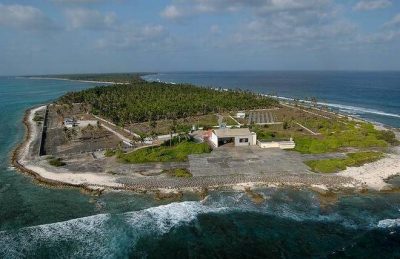Genetic study on people of Lakshadweep Islands 12/05/2019 – Posted in: Daily News
Genetic study on people of Lakshadweep Islands
For: Preliminary & Mains
Topics Covered: Genetic Study, Outcomes of study, SCIR, CCMB
News Flash
Genetic study done on the people of the archipelago (an extensive group of islands) or Lakshadweep islands, by a team at CSIR-Centre for Cellular and Molecular Biology (CCMB), for the first time.
- It has shown that a majority of human ancestry in Lakshadweep is largely derived from South Asia with minor influences from East and West Eurasia.
- And, there was no evidence of early human migration through the Lakshadweep islands.
- They studied major islands of Kadmat, Andorth, Chetlat, Agatti, Kalpeni, Bitra, Kiltan and Minicoy of Lakshadweep and demonstrated a close genetic link of Lakshadweep islanders with people from Maldives, Sri Lanka and India.
- DNA samples of 557 individuals from eight major islands for mitochondrial DNA and 166 individuals for Y chromosome markers were analysed.
Genetic Study Findings
- Early human migration from Africa to Andaman and Australia happened through western coast of India.
- Lakshadweep Islands might have played a major role in early human migration and expected the presence of genetic signatures of ancient people, such as Andamanese and Australian aboriginals.
- Researchers also found a strong founder effect for both paternal and maternal lineages which is a sign that the island population had limited genetic mixing”.
Why Lakshadweep is selected for genetic studies
Lakshadweep is an archipelago of 36 islands, scattered over approximately 78,000 square km of the Arabian Sea, 200-440 kms off the south-western coast of India, with population of approximately 65,000. However, the first human settlement of this archipelago is not clear.
The islands were known to sailors since ancient times and historical documents say that the spread of Buddhism to these islands happened during 6th century B.C., Islam in 661 A.D. by Arabians. Cholas ruled the islands in 11th century, Portuguese in 16th century, Ali Rajahs in 17th, Tipu Sultan in 18th before the British Raj of 19th century.
Lakshadweep facts
- Lakshadweep is an UT of India, situated on the coast of Arabian Sea. Its capital is Kavaratti.
- Mostly peoples depends on the traditional economic activities of fishing, coir making and cultivation of coconut.
- It was formerly (1956–73) called Laccadive, Minicoy, and Amindivi Islands.
- Eight Degree Channel: Separates entire group of Lakshadweep islands from Maldives.
- Nine Degree Channel: separates Minicoy Island from rest of Lakshadweep.
- The state symbol of the animals is the Butterfly Fish. Commonly called by the name of Fakkikadia.
Council of Scientific & Industrial Research
CSIR is known for its cutting edge R&D knowledgebase in diverse S&T areas, is a contemporary R&D organization. CSIR covers a wide spectrum of science and technology – from radio and space physics, oceanography, geophysics, chemicals, drugs, genomics, biotechnology and nanotechnology to mining, aeronautics, instrumentation, environmental engineering and information technology. It provides significant technological intervention in many areas with regard to societal efforts which include environment, health, drinking water, food, housing, energy, farm and non-farm sectors. Further, CSIR’s role in S&T human resource development is noteworthy.
Centre for Cellular and Molecular Biology
The Centre for Cellular & Molecular Biology (CCMB) is a premier research organization in frontier areas of modern biology. The objectives of the Centre are to conduct high quality basic research and training in frontier areas of modern biology, and promote centralized national facilities for new and modern techniques in the inter-disciplinary areas of biology.
Source: The Hindu
You can follow us on LinkedIn and for more updates related to UPSC IAS Preparation, Like our Facebook Page and subscribe our Diligent IAS Youtube Channel
Also Read Related Daily News
- Aditya – L1 First Indian mission to study the Sun
- Grizzled Giant Squirrel
- Global Assessment Report on Biodiversity and Ecosystem Services

